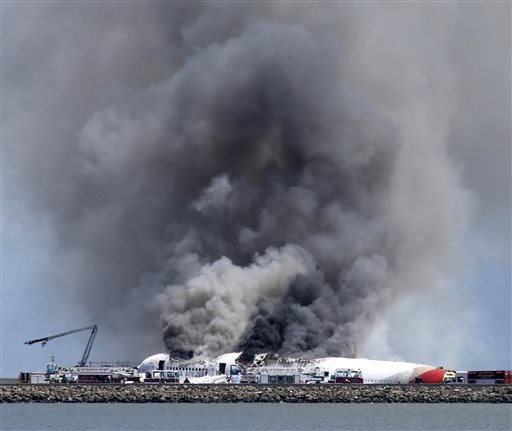When it comes to breaking news on stories like Saturday’s tragic Asiana jet crash at San Francisco airport, it’s becoming increasingly clear that we’ve moved into a new era for journalism. A few years ago, the only real option for news viewers to try and keep on top of urgent stories was to go to one of the cable networks such as CNN, FOX News or MSNBC and watch stories unfold. Today, social media like Twitter, and Internet access to local news and scanner feeds, are getting the jump on the networks.
Covering a breaking disaster story is simply a difficult job. There’s a flurry of information, rumors, conflicting witness reports and separating facts from noise is always difficult. The networks used to have exclusive access to the raw materials of news; they could dispatch camera crews or pick or satellite feeds that ordinary citizens had no access to.
No more. Today, one of the first reports on the crash came from David Eun, a VP at Samsung who was on board Asiana Flight 214. After the crash, he took a photo and tweeted:
I just crash landed at SFO. Tail ripped off. Most everyone seems fine. I’m ok. Surreal… (at @flySFO) [pic] – https://t.co/E6Ur1XEfa4
– David Eun (@Eunner) July 6, 2013
Eun’s tweet and photo were rapidly shared by thousands of Twitter user,; a first-person report from someone actually in the crash that became the initial information on the story for millions as the photo and information spread. Eun’s follower count jumper from a few hundred to over 20,000 in just a few hours as he posted a few updates to his situation and the story.
Local San Francisco TV station and Fox affiliate KTVU was also a major early source of information on the story. KTVU’s initial report came approximately 45 minutes before CNN’s Breaking News twitter feed did. Anyone following Twitter or Facebook was getting updates about the story well ahead of the cable networks.
Police and fire scanners that allow listeners to tune into the radio feeds of first responders aren’t new technology but in the Internet era, now national and even international scanner feeds are available to everyone via websites and mobile apps. During the chase for Boston Marathon bombing suspect Dzhokhar Tsarnaev, thousands turn to police scanner and once again today the scanner feed brought instant raw data. This recording of the scanner feed shows how multiple rescue units were deployed and that the plane was “well on fire” as they arrived and on-scene units reported that people were trapped in the plane. It’s a direct tap into the urgency of the situation and the professionalism of the many fire, ambulance and other rescue units involved.
Of course, the speed that information travels is one thing and accuracy is another story. In the Boston Marathon story, the police scanners were blamed for putting out the name of a suspect which turned out to be incorrect, a story that spread rapidly via Twitter for several hours. Early reports on Twitter indicated that there were no fatalities in the San Francisco crash; as of this writing, however, two deaths are confirmed. This isn’t an indictment of new media; the networks have also gotten reporting wrong many time. Human fallibility is a factor at every level of information exchange; well intentioned people trying their best to get the facts correct make mistakes.
What’s clear now is that the networks have lost their place as the gatekeepers of information and are clearly no longer the first place to go to stay abrest of developing stories. With no filter for the new flood of photo, videos, tweets, texts and other information that will spill out of every disaster or crisis to come, news consumers are increasingly on their own. That may be a daunting proposition but the reality is that it was always so; now we just know it.

COMMENTS
Please let us know if you're having issues with commenting.